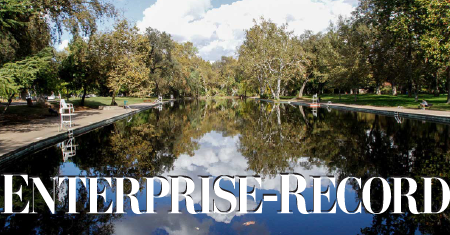
OROVILLE — Five years after the Oroville Dam spillway crisis, DWR has completed the structural rebuild of the main and emergency spillways and says it backs the spillways’ safety.
The rebuilt main spillway was first utilized on April 2, 2019 and was successful in sustaining a flow of 25,000 cubic feet per second.
John Yarbrough, the assistant deputy director for DWR’s state water project said the new spillway is entirely up to modern standards and has been seen considerable oversight throughout the construction process.

“Under the oversight by Federal Energy Regulatory Commission, the California Division of Safety of Dams and an independent board of consultants, the main and emergency spillways have been fully reconstructed to modern engineering standards to be able to handle flows necessary for flood protection of downstream communities,” Yarbrough said. “The main spillway is equipped with over 100 sensors producing automated data that is collected daily to inform DWR engineers about the structure’s performance. Additional sensor equipment has been installed in the dam, with additional installations planned for this summer.”
In 2020, the American Society of Civil Engineers gave a nod to the Oroville Dam rebuild and called it an outstanding civil engineering project.
Yarbrough provided some of the numbers behind the main spillway which consists of a chute with 612 slabs and 204 wall placements, 13 million pounds of reinforcing steel and more than half a million cubic yards of concrete. The main spillway can handle up to 270,000 cubic feet of flow per second.
The emergency spillway, ancillary to the main spillway, has a stairstep splash pad, also called an “apron,” which Yarbrough said is meant to reduce the impact of water released from the structure.
Other projects surrounding that dam that have been implemented since the disaster include a seismic retrofit study, gate structure assessments and the installation of piezometers that collect data from the spillway.
While questions of the spillway’s infrastructure have been answered, at least by DWR, other conclusions remain up in the air as the litigation process between Butte County and DWR continues.
Shortly after the spillway broke, the county filed a lawsuit against the department claiming that the spillway’s infrastructure had been neglected, leading to severe damage to the river that received a sudden and mighty flow of water and debris.
Butte County District Attorney Mike Ramsey said the suit focused on the Feather River which experienced damage all the way down to the Marysville area adding that roughly two million cubic yards of dirt and deleterious material, which consists of materials deemed unfit for project use, were released into the Feather River south of the dam.
The case became complicated as DWR sought to move the hearings to Sacramento where a judge dismissed the suit on the grounds that DWR was not considered an individual person based on the legal terminology, Ramsey said.
This prompted Ramsey and the county to take the case to the Third District Court of Appeals where it sits now.
“Basically, we exchange briefs and the Third District Court asked if we could negotiate a disposition,” Ramsey said. “We felt we were trying to negotiate in good faith but felt DWR were not — of course, DWR may have felt that way about us. So any sort of negotiation failed to settle the appeal. Now it’s just a matter of exchanging briefs and setting up for a hearing before a panel.”
Ramsey said he thought the incident came down to 50 years of negligence by the department, thus leading to the rupture and subsequent flooding of the Feather River.
“We continue to try and get justice for the damage done to the river and the environment,” Ramsey said.
In regards to the incident, Yarbrough spoke on the issues that came with the crisis.
“The Oroville spillways incident has made a lasting impact on dam safety in California and across the nation,” Yarbrough said. “The reconstruction of the Oroville spillways is just one of the many crucial changes DWR has implemented since the incident to bolster dam safety.”
While the litigation between the county and DWR regarding river pollution is ongoing, a settlement was reached in 2019 that led to a payout of roughly $11 million from DWR to help pay for the road damage that occurred as miles of traffic filled the roadways and Highway 70 when residents tried to flee Oroville due to the flooding threat.
The total payout came out to $12 million and the remaining funds went toward the county’s general fund, a fund for future road projects and other resources.



